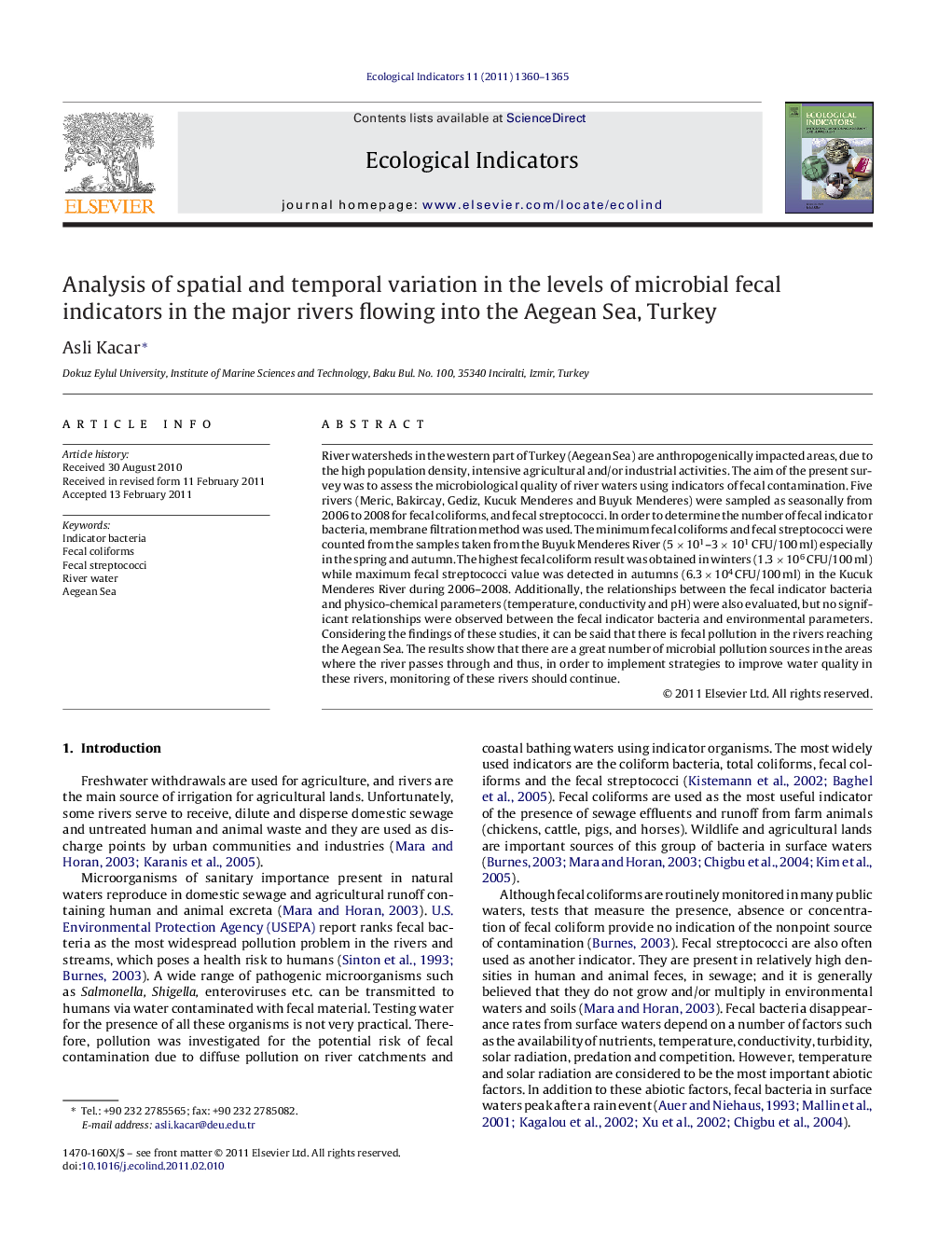| Article ID | Journal | Published Year | Pages | File Type |
|---|---|---|---|---|
| 4374072 | Ecological Indicators | 2011 | 6 Pages |
River watersheds in the western part of Turkey (Aegean Sea) are anthropogenically impacted areas, due to the high population density, intensive agricultural and/or industrial activities. The aim of the present survey was to assess the microbiological quality of river waters using indicators of fecal contamination. Five rivers (Meric, Bakircay, Gediz, Kucuk Menderes and Buyuk Menderes) were sampled as seasonally from 2006 to 2008 for fecal coliforms, and fecal streptococci. In order to determine the number of fecal indicator bacteria, membrane filtration method was used. The minimum fecal coliforms and fecal streptococci were counted from the samples taken from the Buyuk Menderes River (5 × 101–3 × 101 CFU/100 ml) especially in the spring and autumn. The highest fecal coliform result was obtained in winters (1.3 × 106 CFU/100 ml) while maximum fecal streptococci value was detected in autumns (6.3 × 104 CFU/100 ml) in the Kucuk Menderes River during 2006–2008. Additionally, the relationships between the fecal indicator bacteria and physico-chemical parameters (temperature, conductivity and pH) were also evaluated, but no significant relationships were observed between the fecal indicator bacteria and environmental parameters. Considering the findings of these studies, it can be said that there is fecal pollution in the rivers reaching the Aegean Sea. The results show that there are a great number of microbial pollution sources in the areas where the river passes through and thus, in order to implement strategies to improve water quality in these rivers, monitoring of these rivers should continue.
